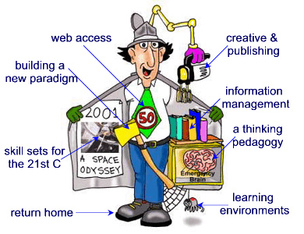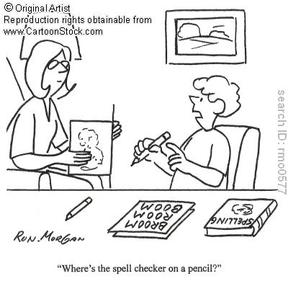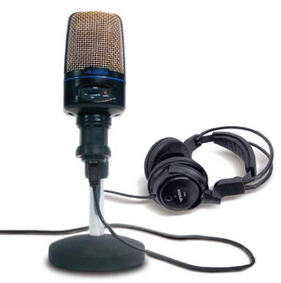Food for thought...

On this page you will find some intriguing ideas regarding the teaching of English in our schools today. I am specifically highlighting ideas that will help students become more engaged in the classroom by utilizing various forms of technology and media. Teachers can no longer cut it on textbooks and white boards alone and we have a world wide web full of resources at our disposal. I highly suggest that you subscribe to the English Journal if you have not yet. It is a great resources and if you wish to read further on the ideas I've presented here it is a must.
Making homework more social

In her article "The Facebook Generation: Homework as Social Networking," Stacy Kitsis concludes that today's students are so interconnected with each other that a different approach needs to be had when it comes to homework. Most of the time when homework is assigned it is meant to be done by the student, with no one else contributing, in the privacy of their home that evening, and then the teacher will usually simply check it off to make sure it has been done, with littler or no input. While this may have worked for previous generations, current students need feedback, they need to know that what they did was worth someone else's' time to look at. The solution: make homework more social and interactive. Since most homework is more for practice and not to be meant as a major assessment, it would be perfect to re-shape how it's done. Various idea from e-mailing to blogging were brought up in the article as ways to get students to interact with each other while doing work related to the class. I think it's a brilliant idea and I'd love to implement ideas in my future classroom, the only issues you run into are ease of access to a computer and the internet. While it's becoming more widespread, it's still not everywhere and this could hold some students back. But, students with access could have an entire discussion on the reading done in class for the day all online and time in class would not be wasted. It is certainly an idea if, everyone had equal access and if set-up correctly, could do wonders for students and the teacher alike.
Source: English Journal, Volume 98, I ssue 2, November 2008.
Source: English Journal, Volume 98, I ssue 2, November 2008.
The Simpson's and Literature response

Ginger Eikmeir, in her article "D'oh! Using The Simpsons to Improve Student Response to Literature," discusses the unfortunate issue of many high school and middle school students not being able to read or comprehend texts that are supposed to be at their level because literacy development is not dealt with less and less as student progress through their schooling. One way to help bridge the gap is to bring in references made to the texts being covered from various pop culture sources. In this particular example the long-running TV show, The Simpsons, seems to be a perfect candidate because many of their episodes have parodied works such as Lord of the Flies, or The Raven, and the show is appropriate for a general audience like that of a classroom. I wholeheartedly agree with this idea and think it would be a great way to get students to understand texts better, because often times students are already familiar with the characters of a show and while they're reading a book they can think back to the episode they saw which parodied the book and it should help them make connections. Obviously this can't be done for every book that's read, and I certainly would not endorse it that way. Over-reliance on it could possibly lead to students relying too much on the clips being shown and not on the actual text itself. Reading instruction still needs to be taught and students need to be able to read through a text and understand it, but, from time to time using a resource such as the one described to help supplement or further build understanding is a great idea.
Source: English Journal, Volume 98, I ssue 2, November 2008.
Source: English Journal, Volume 98, I ssue 2, November 2008.
Moving past spellcheck

Students comming into High School English classrooms are lacking the ability to spell properly, and most don't know what to do. At least that's what Rebecca Bowers Sipe believes in her article "Teaching Challenged Spellers in High School English Classrooms," and she doesn't mind. Instead of merely assuming students should either know how to spell by the time they reach high school, or know how to figure out how to spell something, she decides that talking about it as a class helps. First, have everyone write down strategies they use to help them spell things out, often times this collaborative discussion leads to new idea that other had not thought of. From there analyze student writing and see what needs the most work. Even if you take the first 10 minutes of class each day to review things such as common homophones (or even what homophones are) or various rules such the "i before e, except after c..." rule. Clearing out major problems will certainly help, then from there you could discuss word history to understand how words are broken down at times into different parts. What matters is that you put the effort in to fixing a problem, especially one like spelling which can negatively impact a students willingness to read and write. I honestly think that this would be a difficult thing to do, not because it isn't important, but getting students to care about spelling and grammar are difficult things to do. Many will probably be content with not being a strong writer or speller, because they know that they have spell-check to fix their mistakes. Students need to be instructed, and even before assigning papers I spend time going over writing conventions hoping that if I catch them early, and students apply them from the get-go, they will see more positive remarks on their papers and would be more willing to write.
Source: English Journal, Volume 97, Issue 4, March 2008.
Source: English Journal, Volume 97, Issue 4, March 2008.
Online comprehension and evaluation

We already know that we need to incorporate technology in the classroom and that the use of internet sources is going to be extremely significant for our students. But, we need to be sure that we teach them how to properly evaluate and comprehend exactly what they're looking at. The world wide web is extensive and teaching students how to navigate it and how to determine the credibility of what they find is crucial. In this lesson plan from ReadWriteThink students are guided through four different internet sessions. First we start out by simply exploring a website and discussing how we read through websites and if the strategies we use in a book are similar to that of a website? Discussing online comprehension strategies are an important starting block and as students take a cyber tour of a website they need to plan what they will be doing, predict what they will find out from clicking on various links, monitor their progress based off of what they predicted, and finally evaluate the site and if it fulfilled what you had originally planned on discovering. The next sessions will have students look at various websites, some fake, some real and have students determine the defining characteristics of the sites and what the clues for authenticity are that they found. They will work on a compare/contrast chart and write about their findings. Finally, students will write about a hoax website of their own that they will make and what common characteristics it will have of other websites they felt were fake. I think this is a valuable exercise for students because we can't set them loose on technology, or set technology loose in our classroom, without proper guidance and evaluation of source material. If anything I might extend this lesson and make it longer to expose my students to as wide of a variety of sources as possible.
Grades: 9-12
Source: http://www.readwritethink.org/classroom-resources/lesson-plans/hoax-hoax-strategies-online-1135.html?tab=4#tabs
Grades: 9-12
Source: http://www.readwritethink.org/classroom-resources/lesson-plans/hoax-hoax-strategies-online-1135.html?tab=4#tabs
Audio Broadcasting/podcasting

Audio broadcasting, or, the more current popular form known as podcasting, is all the rage these days. In addition to the hundreds of songs a day they listen to on thier mp3 players students are tuning into various podcasts as well. Everyone who's anyone is creating their own and you're just as likely to find a podcast devoted to Frank Sinatra as you are to find one about everyone's favorite boy wizard. Well, as it turns out this isn't exactly a new thing a there was once a very famous podcast by George Orwell that caused quite a bit of controversy. In this lesson students must first work together to create a list of traits that identity a great story. Everything from setting to characters to plot should be discussed. Students are then to read thought he script of H. G. Well's famous War of the Worlds and discuss how it matches the characteristics of a great story the students listed. Then student will listen to Orson Welles audio re-telling of the story and see how it differs and how the use of tone and emotion in the voice can impact readers. Finally, students will take a favorite text of their own and orally re-tell it using tone and emotion and sharing with the class, as they discuss how simply reading something as opposed to listening to something being read. This is a great skill for students to learn and is a fun activity that goes beyond the English textbook. The only catch is that teacher needs to have access to some sort of audio recording device, but assuming that's possible I don't see any issues with this lesson. It not only teaches them important skills but takes an event that is nearly 75 years old and connects it with modern technology that students can understand- what could be better?
Grades: 9-12
Source: http://www.readwritethink.org/classroom-resources/lesson-plans/audio-broadcasts-podcasts-oral-901.html
Grades: 9-12
Source: http://www.readwritethink.org/classroom-resources/lesson-plans/audio-broadcasts-podcasts-oral-901.html
MyTube- making a difference

You will find the most success in the classroom when you tie a lesson into something popular amongst the students, and I'm not sure what could be more popular than the internet video site YouTube. This lesson lets students create their own YouTube public service announcements. Students will need to watch some of the good one's already up on the site and analyze why they work, or, why they don't work. After that students will write a draft of their own, and then film it and post it to the web! This lesson not only gets students involved with using technology as a means to broadcast powerful messages as well as researching topics of social, political and environmental relevance to today's world. The key to this lesson, besides technological issues if they aren't available, is getting students to really think big about issues in today's society. Drawing off of texts such as Jonathan Swift's a Modest proposal the class could even make satirical videos. What matters here is getting students to think about important issues dealt with in our society and how to best express themselves. If done correctly, this could be a lesson that really gets students fired up because what teenager doesn't want to voice their opinion?
Grades: 9-12
Source: http://www.readwritethink.org/classroom-resources/lesson-plans/mytube-changing-world-with-1069.html
Grades: 9-12
Source: http://www.readwritethink.org/classroom-resources/lesson-plans/mytube-changing-world-with-1069.html
